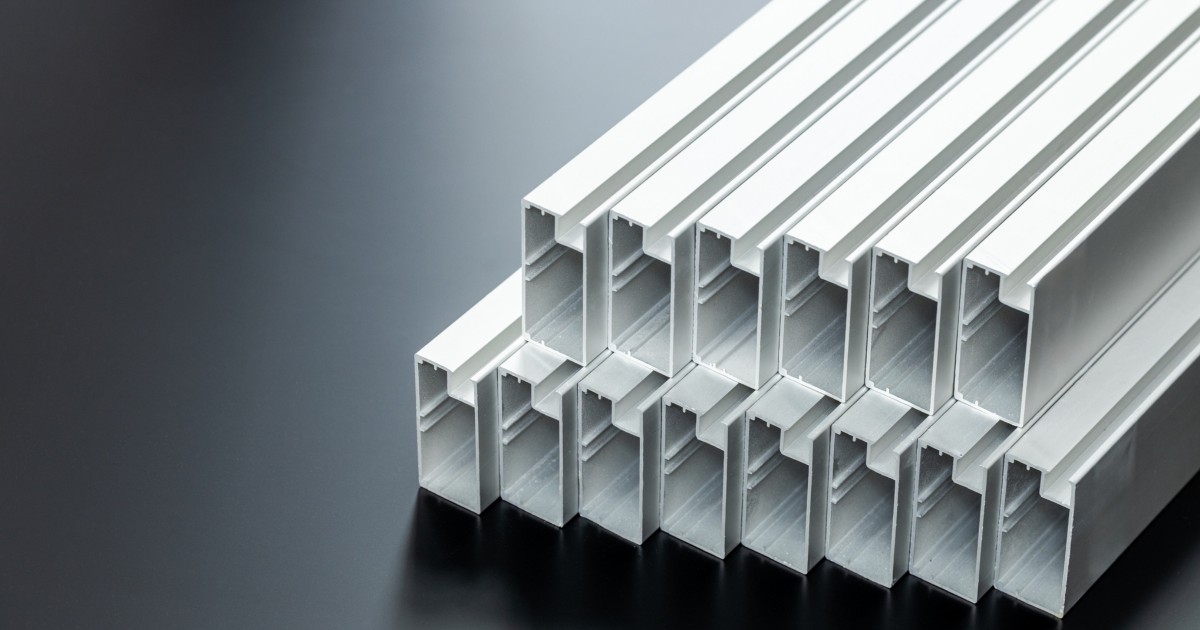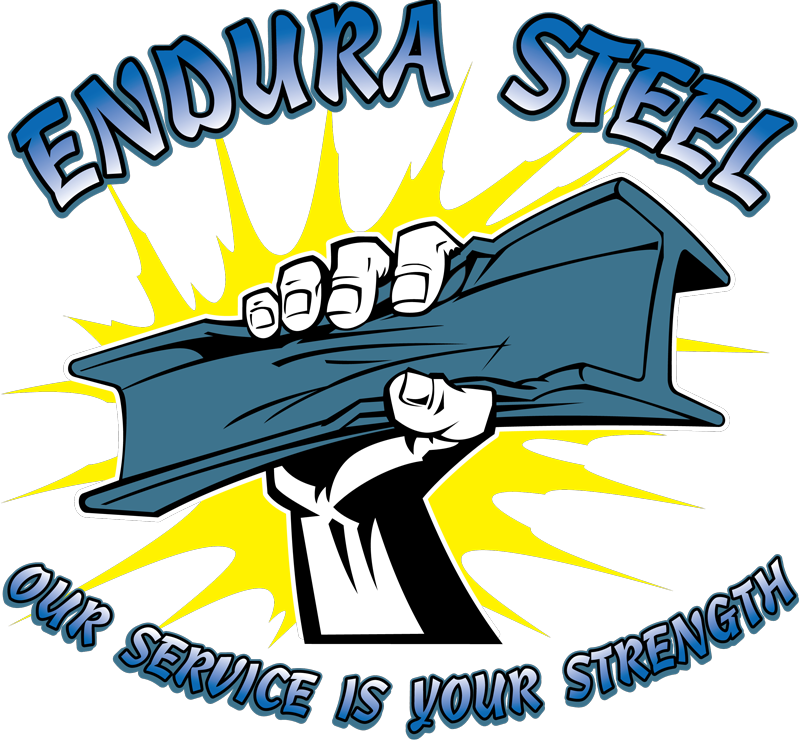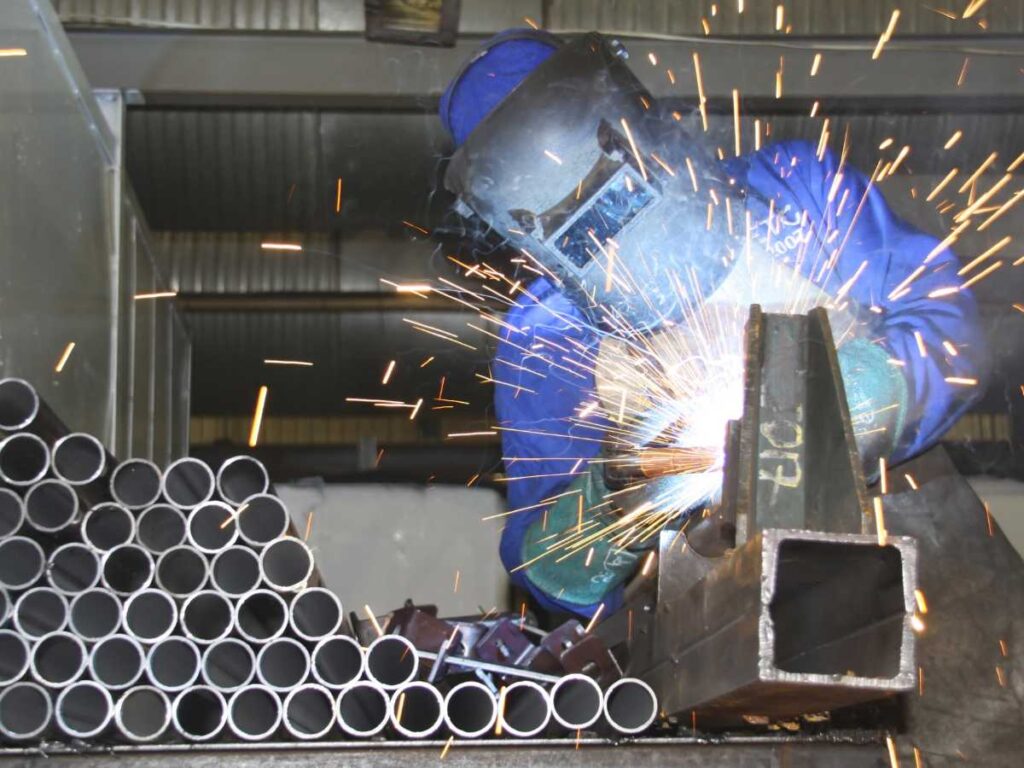Aluminum is a versatile and widely used metal due to its unique properties. Its lightweight nature, resistance to corrosion, high electrical conductivity, and ease of machining make it a preferred choice for different applications. This metal’s ductility and malleability allow it to be extruded, rolled, and forged into various forms, including pipes and tubes.
We will explore the fundamental differences between pipes and tubes, delve into their manufacturing processes, and examine the spectrum of their applications across industrial, commercial, residential, medical, and scientific settings. We will consider the environmental impact of using aluminum and look at emerging trends that could shape its future usage. Through this multi-faceted approach, the article seeks to provide valuable insights for professionals, researchers, and anyone interested in using aluminum pipes and tubes.
Basic Properties of Aluminum
Lightweight
Aluminum is renowned for its low density, weighing approximately one-third as much steel or copper. This makes it an ideal choice for applications where weight is a key concern, such as automotive and aerospace industries. For example, aircraft made with significant amounts of aluminum are lighter and consume less fuel, which has economic and environmental benefits.
Corrosion Resistance
One of aluminum’s standout features is its natural corrosion resistance. When exposed to air, aluminum forms a layer of aluminum oxide, which acts as a protective barrier against oxidation and other types of corrosion. This property is particularly useful in applications like construction and plumbing, where materials are often exposed to various environmental conditions. Think of this oxide layer as a shield, akin to an umbrella protecting you from rain.

Aluminum is an excellent conductor of electricity, second only to copper. However, when you factor in its lighter weight and lower cost, it becomes a more practical choice for many electrical applications, such as wiring in residential buildings or power lines. Imagine if electrical conductors were like highways; aluminum would be a less crowded yet highly efficient route compared to copper, especially when considering the cost-to-performance ratio.
Malleability and Ductility
The malleability and ductility of aluminum make it easy to work with in various forms and shapes, which is why it is so commonly found in a wide range of products. Malleability refers to aluminum’s ability to be rolled or hammered into thin sheets, while ductility means it can be drawn out into wires or other elongated shapes without breaking. These properties open up various design possibilities, similar to how an artist has greater creative freedom when working with versatile mediums like clay or watercolors.
Distinction Between Aluminum Pipes and Tubes
Shape: Round vs. Square/Rectangular
While “pipe” and “tube” are often used interchangeably, their shapes typically differ. Aluminum pipes are usually round and are designed to carry fluids or gases. In contrast, aluminum tubes can be round, square, or rectangular and are often used in structural applications. Think of pipes as analogous to veins in the human body, designed for flow, while tubes are more like the bones, providing structural support.
Wall Thickness
Another difference lies in the wall thickness. Pipes generally have a standardized wall thickness to ensure unobstructed flow and are measured by their internal diameter. Tubes, on the other hand, are usually available in a variety of wall thicknesses and are often measured by their external diameter. The variations in wall thickness in tubes make them suitable for applications requiring different levels of strength and rigidity. It’s akin to choosing different types of rope for different tasks; a thicker rope might be used for heavy lifting, while a thinner one may be used for tying knots.
Dimensional Tolerances
Pipes usually have more stringent dimensional tolerances than tubes. This is because even a small variation in the diameter of a pipe could significantly affect the flow rate of the fluid or gas it’s carrying. Tubes are generally more forgiving in their dimensional tolerances, as they are often used in applications where such stringent controls are not as necessary. Imagine building a Lego tower; you need each piece to fit precisely to ensure stability (like pipes), but you have more freedom when choosing decorative elements (like tubes).
Applications
Pipes are primarily designed to transport liquids or gases and are thus common in plumbing, HVAC systems, and chemical processing plants. Tubes are useful in broader applications, from bicycle frames and furniture to aerospace components. Essentially, pipes are like the arteries and veins in a city’s infrastructure, conducting water or gas from one point to another. At the same time, tubes serve multiple purposes and can be found in various aspects of construction, machinery, and more.

Manufacturing Processes
Extrusion
Extrusion is a process in which a billet of aluminum is forced through a die, creating a long, continuous piece with a uniform cross-sectional shape, similar to how pasta is made using a pasta machine. The extruded product can be a pipe or a tube, depending on the die’s shape and the application’s specific requirements. Extrusion is especially useful for producing complex cross-sectional shapes and is widely used in the automotive, construction, and aerospace industries.
Drawn over Mandrel (DOM)
DOM primarily manufactures tubes with high dimensional accuracy and excellent surface finish. The basic idea is to take a tube that’s already been extruded and refine it further. The tube is drawn over a mandrel and through a die, stretching and compressing it to achieve a smoother interior and exterior surface. If you think of extrusion as the act of making the “dough” for a pie, DOM is like rolling it out carefully to get that smooth, flawless crust.
Welded Tubes
Welded tubes are made by taking a flat sheet of aluminum and forming it into a tube shape. The edges are then welded together to form a seam. This method is generally more cost-effective than extrusion or DOM but may result in a weaker tube due to the presence of a seam. Welded tubes are often used in applications where high strength is not a primary concern but where cost-efficiency is desirable, like opting for a stapled booklet over a hardbound book when durability is not the main requirement.

Industrial Applications
Aerospace
In the aerospace sector, the lightweight nature of aluminum makes it indispensable for components like fuselages, wing structures, and engine parts. The material’s high strength-to-weight ratio contributes to the overall efficiency and safety of the aircraft. For instance, the Boeing 747 is primarily made of aluminum. This is akin to an athlete wearing lightweight but sturdy gear to optimize performance without compromising safety.
Automotive
In automotive design and manufacturing, aluminum tubes and pipes are used extensively to reduce vehicle weight, improving fuel efficiency and reducing emissions. They are found in frames, engine components, exhaust, and cooling systems. Think of using aluminum in cars, like opting for a light yet durable backpack for a long hike; it makes the journey easier without sacrificing essential functions.
Construction
In construction, aluminum tubes are often used in scaffolding, framework, and railings. Pipes are commonly employed for plumbing and HVAC systems. The material’s corrosion resistance is especially beneficial in this context, as it ensures a longer lifespan for the structure. Imagine constructing a building using Lego bricks; if those bricks were made of aluminum, you’d have a robust, long-lasting structure that could withstand various environmental challenges.
Plumbing
Aluminum pipes are also found in industrial plumbing where lightweight, corrosion-resistant material is needed. These pipes are especially useful for carrying water, chemicals, or gases in manufacturing plants, chemical facilities, and wastewater treatment centers. It’s similar to choosing stainless steel utensils for cooking acidic foods; the material’s properties make it suitable for specific tasks that other materials might not handle as well.

Commercial and Residential Applications
Furniture and Decorative Pieces
Aluminum tubes construct modern, lightweight furniture such as chairs, tables, and bed frames. The material’s malleability allows for intricate designs, making it a favorite for decorative pieces. Imagine aluminum furniture as the sleek, modern decor in a contemporary art gallery; it complements the space without overpowering it and offers functional benefits like ease of movement.
Railings and Fencing
Both aluminum pipes and tubes are extensively used to construct railings and fences. Their corrosion resistance makes them particularly useful for outdoor installations exposed to the elements. For instance, aluminum railings along a staircase or balcony are functional and add an aesthetic touch. They serve a dual purpose, much like a well-designed garden fence that keeps out intruders while beautifying the property.
Exercise Equipment
Aluminum tubes are frequently used to manufacture exercise equipment like weightlifting bars, treadmill frames, and stationary bicycle structures. The lightweight yet sturdy material makes it ideal for equipment that needs to support significant weight while still being easy to move or adjust. In this context, aluminum serves as the backbone of the exercise equipment, much like the metal frame of a climbing wall: strong enough to support climbers but light enough for easy installation and adjustment.

Medical and Scientific Applications
Medical Devices
Aluminum is commonly used to fabricate various medical devices like wheelchairs, crutches, and surgical instruments. Its lightweight and corrosion-resistant properties make these devices both portable and long-lasting. In the medical world, aluminum devices can be equated to a Swiss Army knife: versatile, reliable, and exceptionally useful in multiple scenarios.
Laboratory Setups
In scientific labs, aluminum tubes and pipes are used in setups for various experiments and research activities. These can include frameworks for test tube holders or more complex structures in research facilities. The corrosion-resistant nature of aluminum makes it ideal for use in labs that handle corrosive chemicals. It’s similar to using a non-reactive glass container when mixing volatile substances; it ensures the material won’t interfere with the experimental results.
Transport of Gases and Fluids in a Controlled Environment
Aluminum pipes transport gases or fluids in highly controlled environments like cleanrooms or medical research facilities. These settings require materials that don’t react with the substances they carry and can maintain a sterile environment. In this sense, aluminum pipes act as the circulatory system in these controlled settings, efficiently and safely transporting vital substances from one point to another.
Environmental Impact
Recycling Possibilities
One of the significant advantages of aluminum is its recyclability. Almost 75% of all aluminum produced is still used, thanks to recycling. Recycling aluminum consumes only about 5% of the energy, producing new aluminum from bauxite ore. This is akin to using a refillable water bottle instead of single-use plastic bottles; it dramatically reduces waste and conserves resources.
Sustainability
Aluminum’s durability and long lifespan also contribute to its sustainability. When used in construction or other long-term applications, the need for replacement is less frequent, thereby reducing waste. Additionally, aluminum’s lightweight nature can reduce energy costs in transportation, as seen in the automotive and aerospace industries. It’s comparable to choosing a reusable shopping bag over a disposable ones; it might be a minor change, but its cumulative impact on sustainability is significant.

Future Trends
Aluminum Composite Materials
One of the emerging trends in the aluminum industry is the development of aluminum composite materials (ACMs), which combine aluminum with other materials to produce composites with enhanced properties. These might include greater strength, lighter weight, or improved thermal conductivity. ACMs are like the advent of hybrid cars that combine gasoline engines with electric batteries to enhance efficiency and performance.
3D Printing
The adoption of 3D printing technologies for aluminum components is gaining momentum. This allows for creating custom shapes that would be expensive to produce with traditional manufacturing methods. 3D Printing of aluminum is comparable to the transition from hand-drawn sketches to digital art; it opens up new possibilities in design and complexity.
Nanotechnology in Aluminum Coatings
The application of nanotechnology in coatings for aluminum products is another promising trend. These coatings can impart properties like self-cleaning, anti-corrosion, or enhanced conductivity to aluminum surfaces. Imagine applying a layer of water-repellent spray to your shoes; the basic structure remains the same, but the added layer significantly enhances its utility.
Recommendations
- Material Specifications
When choosing aluminum pipes and tubes, scrutinize the material specifications like alloy type, temper, and mechanical properties. Different alloys and tempers offer various combinations of strength, corrosion resistance, and machinability. This is similar to selecting the right type of wood for furniture: hardwood for durability softwood for ease of carving.
- Dimensional Accuracy
Consider the dimensional tolerances required for your specific application. If the project demands high precision, options like drawn-over mandrel (DOM) tubes may be more suitable. Think of this as choosing a fine-tipped pen for detailed illustrations instead of a broad-tipped marker suitable for bold strokes.
- Wall Thickness
The choice of wall thickness will depend on the intended use, particularly concerning pressure resistance or structural integrity. Thicker walls offer greater strength but add weight and may require specialized connections. It’s like choosing between a thin or thick rope based on the weight it needs to support.
- Application Environment
Consider aluminum types with higher corrosion resistance or specialized coatings for outdoor or corrosive environments. This can be likened to opting for all-weather tires for a vehicle facing various road conditions.
- Certifications and Standards
Always check for relevant industry certifications and standards like ASTM, ASME, or ISO to ensure the material’s quality and suitability for your application. This is similar to looking for safety certifications when purchasing an electrical appliance.
- Consult Experts
If the application is specialized or complex, consult experts or engineers with aluminum materials experience in similar situations. Similarly, if you were dealing with a complex medical condition, you’d consult a specialist rather than relying solely on general advice.
The Alchemy of Aluminum: A Universe of Utility
From the aerospace and automotive sectors to residential and commercial uses and even cutting-edge scientific and medical applications, aluminum stands out for its unique blend of attributes—lightweight, corrosion-resistant, and highly malleable. Further buoyed by its environmental credentials and potential for technological advancements, aluminum continues to shape the future, offering a harmonious blend of form and function that few materials can rival.
Frequently Asked Questions
Why are Aluminum Pipes and Tubes Commonly Used?
Aluminum pipes and tubes are lightweight, corrosion-resistant, and highly conductive. These characteristics make them versatile and ideal for multiple applications, such as in the automotive, construction, and aerospace industries.
What Industries Predominantly Use Aluminum Pipes and Tubes?
The construction, automotive, aerospace, and marine sectors are the key industries that extensively use aluminum pipes and tubes. They are also found in applications like HVAC systems, gas lines, and solar panels.
What are the Types of Aluminum Alloys Used in Pipes and Tubes?
Alloys like 6061, 6063, and 2024 are commonly used. Each alloy offers a unique set of mechanical properties catering to specific applications. For example, 6061 is excellent for structural elements, while 2024 is preferred in aerospace applications.
How Do Aluminum Pipes and Tubes Compare to Steel Counterparts?
Aluminum pipes and tubes are generally lighter and more corrosion-resistant than steel. However, steel tends to be stronger and can withstand higher temperatures. Therefore, the choice between the two depends on the specific requirements of a project.
Is it Environmentally Friendly to Use Aluminum Pipes and Tubes?
Yes, aluminum is recyclable and can be melted down and reformed without losing quality. This makes it more sustainable than other materials that degrade upon recycling.
Can Aluminum Pipes and Tubes be Customized?
Absolutely. Aluminum’s malleability allows for various custom shapes and sizes, fulfilling specific industry requirements.
Are Aluminum Pipes and Tubes Cost-Effective?
While initial costs can be higher than other materials like PVC, the long-term benefits, such as durability and low maintenance, make aluminum a cost-effective choice in many applications.
References

